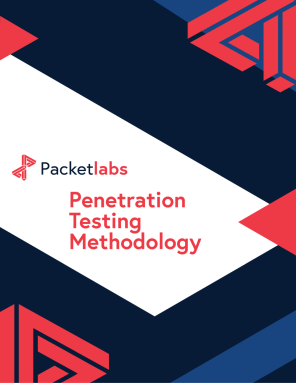How to Protect Against Insider Attacks
Would you like to learn more?
Download our Pentest Sourcing Guide to learn everything you need to know to successfully plan, scope, and execute your penetration testing projects.
Insider threats pose a unique challenge to cybersecurity teams because they originate from individuals who already have some form of legitimate access. Simulating insider attacks with Red Team security exercises allows organizations to test their internal security controls and their effectiveness. Red Teaming is especially effective to evaluate whether security teams can detect and respond to trusted users behaving maliciously or negligently.
These assessments can simulate actions taken by employees, third-party contractors, freelancers, or highly privileged users, uncovering hidden weaknesses in access controls, monitoring, and response processes. By mimicking real-world attack paths, Red Teaming helps organizations build resilience against both intentional and unintentional insider threats.
In this article, we explore the most common types of insider threats and outline practical strategies for detecting and defending against them.
Types Of Insider Threats
Insiders Social Engineering Other Staff: An employee may manipulate colleagues into revealing passwords, granting access, or sharing sensitive information under false pretenses.
Exfiltrated Data and Stolen Devices: Insiders may steal physical devices like laptops or USB drives, or use legitimate access to exfiltrate proprietary or sensitive data.
Credential Theft by Another Insider: One employee might steal or reuse another employee’s credentials to carry out an attack while masking their identity.
Deploying Malware or Ransomware: A trusted user may plant malicious software onto internal systems, either acting alone or in coordination with external threat actors.
Purposefully Implementing Poor Security Hygiene: Insiders might deliberately disable security controls, reuse weak passwords, or create insecure configurations to allow future exploitation.
Violating Established Policies: This includes accessing restricted systems without authorization, ignoring data handling rules, or using shadow IT tools that bypass governance.
Human Error: Well-meaning staff can still cause harm through negligent behavior—like misdirected emails, falling for phishing, or uploading sensitive data to public cloud apps.
Collusion with External Threat Actors: Some insiders work in concert with cybercriminals or competitors, providing access, credentials, or inside knowledge to aid external attacks. This may include posting sensitive information to Dark Web forums, or communicating directly with cybercriminals. In some cases, insiders may act as an Initial Access Broker (IAB) providing direct remote access to attackers.
Detecting and Preventing Insider Threats
Detection is challenging because insiders have deeper insights on the internal environment than external attackers. Insiders can leverage this insight to remain stealthy, bypass monitoring, and exploit legitimate access without raising immediate suspicion. Successful insider threat detection combines behavioral monitoring, access control, policy enforcement, and organizational culture.
Using Deceptive Cyber Tools: Deploy decoys such as honeypots, fake credentials (honey-creds), and honey-files to lure and identify malicious insiders who attempt unauthorized access or data exfiltration
Use Role-Based Access Controls: Restrict access based on users’ roles and responsibilities. This limits lateral movement and ensures that employees only have the minimum access needed to perform their duties.
Data Governance: Classify sensitive data, apply access restrictions, and monitor for unusual usage patterns. Clear governance policies help track how data is accessed, modified, and transferred internally.
Cybersecurity Awareness Training: Insider threats also come from human error, misinformation, and lack of education. Set the record straight by ensuring that all staff are educated about the importance of cybersecurity, data handling, and following internal policies.
Monitor for Policy Violations: Creating a policy is one thing, but policies don't actually enforce themselves to prevent violations. Use logging, DLP (data loss prevention), and automated alerts to flag non-compliant behavior.
Conduct Red Teaming Exercises: Red teaming security assessments can simulate insider attacks from any role or access level in the organization. These exercises test real-world defenses, identify blind spots, and help refine detection and response strategies for insider threats.
Create a Feedback Channel for Staff: Establish an anonymous or confidential channel where employees can report suspicious behavior or security concerns. This can help surface early signs of insider risk before damage is done.
Create a Comprehensive Off-boarding Process: De-provision accounts, revoke VPN and cloud access, recover company-owned devices, and audit for residual access paths when an employee exits the organization.
Monitoring the Dark Web: Proactively scan the dark web for mentions of your company’s internal systems, credentials, or stolen data to identify signs of insider activity or collaboration with external actors.
Using UEBA to Detect Insider Attacks: User and Entity Behavior Analytics (UEBA) can flag deviations from normal behavior—such as accessing unusual files, working odd hours, or using unauthorized tools—that may indicate insider activity.
Conclusion
Insider threats are difficult to detect and can cause severe damage due to trusted access. Simulating insider attacks through Red Teaming helps organizations uncover weaknesses and improve defenses. By understanding attack types and implementing controls like UEBA, data governance, and access restrictions, organizations can strengthen their ability to detect and prevent malicious or accidental insider activity.
Contact Us
Speak with an Account Executive
Interested in Pentesting?

Penetration Testing Methodology
Our Penetration Security Testing methodology is derived from the SANS Pentest Methodology, the MITRE ATT&CK framework, and the NIST SP800-115 to uncover security gaps.
Download Methodology
Pentest Sourcing Guide
Download our Pentest Sourcing Guide to learn everything you need to know to successfully plan, scope, and execute your penetration testing projects.
Download GuideExplore in-depth resources from our ethical hackers to assist you and your team’s cyber-related decisions.

September 13 - Blog
Why Multi-Factor Authentication is Not Enough
Knowing is half the battle, and the use and abuse of common frameworks shed insight into what defenders need to do to build defense in depth.

November 19 - Blog
The Top Cybersecurity Statistics for 2024
The top cybersecurity statistics for 2024 can help inform your organization's security strategies for 2025 and beyond. Learn more today.

October 24 - Blog
Packetlabs at SecTor 2024
Packetlabs is thrilled to have been a part of SecTor 2024. Learn more about our top takeaway's from this year's Black Hat event.







